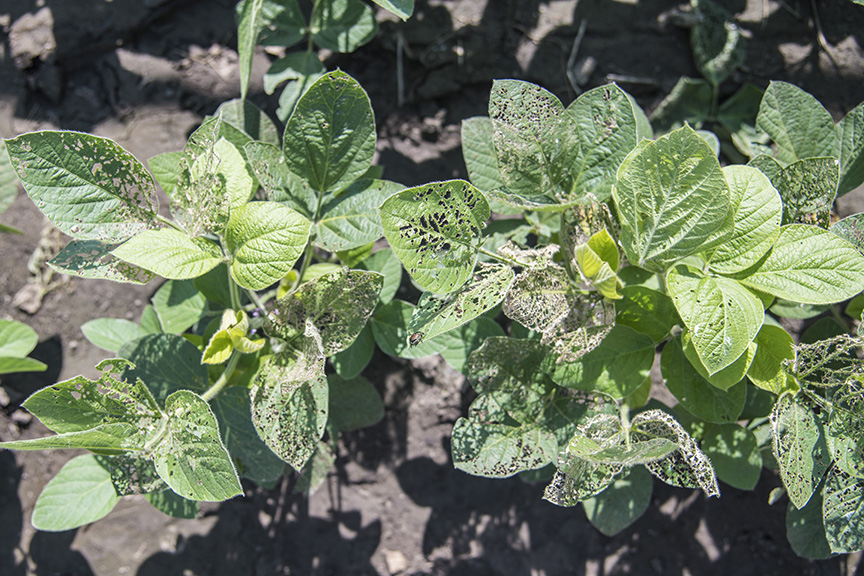By Todd Hubbs, Department of Agricultural and Consumer Economics, University of Illinois “Prospects for Soybean Demand.” farmdoc daily (9):138
Uncertainty regarding soybean acreage and yield potential will continue to be significant factors in soybean price movements through harvest. Without a severe crop shortfall, higher soybean prices rely on demand prospects over the next year.
Soybean crush slowed in the final quarter of the current marketing year. The USDA lowered 2018-19 marketing year crush by 15 million bushels to 2.085 billion bushels in July. Estimates of monthly soybean crush from the USDA through May totaled 1.58 billion bushels. The NOPA crush report indicated a June crush of 148.8 million bushels. For this marketing year, USDA monthly crush numbers have run approximately 6 percent above NOPA crush report estimates. At this rate, June crush equaled 158 million bushels and brought the total crush for the first ten months of the marketing year to 1.734 billion bushels. Crush during the last two months of the marketing year needs to total 350 million bushels to reach the USDA projection, on par with totals crushed in the previous year over the same period.
The USDA estimates soybean exports this marketing year at 1.7 billion bushels, down 434 million bushels from the 2017-18 marketing year. As of July 25, exports totaled approximately 1.54 billion bushels. Outstanding sales sit at 315 million bushels with 173 million bushels slated for China. Export inspections need to average 30.2 million bushels per week over the remainder of the marketing year to hit the USDA estimate. Inspections averaged 29.5 million bushels over the last four weeks. The current pace of exports appears to be slightly below the pace to meet the USDA estimate. Based on the latest consumption levels, ending stocks look certain to exceed one billion bushels at the end of August.
Soybean demand over the next year depends on China. The current state of Chinese tariffs on U.S. soybeans and the continuing spread of African Swine Fever does not bode well for U.S. soybean exports. Resumption of negotiations with China this week provides some hope for a resolution to the trade impasse. China’s approval of goodwill purchases totaling approximately 110 million bushels offers some support for exports. Chinese soybean purchases remain contingent on progress in negotiations. Based on previous negotiation outcomes, a decent probability exists that tariffs stay in place through the next marketing year.
The outbreak of African Swine Fever in China last year led to the Chinese hog herd dropping nearly 20 percent in 2019. Prospects of an additional 10 percent reduction in 2020 and a 30 percent drop in the sow herd indicate the current outbreak may take many years to resolve. Reports from the World Organization of Animal Health (OIE) indicate the disease continues to spread in Asia and parts of Europe. In Asia, reports of ongoing outbreaks of the disease in Vietnam, Mongolia, Laos, Cambodia and North Korea point toward a long-run continuation of the disease in the region. Lower pork consumption, substitution from other protein sources, and pork imports look to take up the slack in Chinese pork production. A rapid escalation of U.S. pork imports to China expected at the start of the year failed to materialize, but expectations of increased pork exports in the latter half of 2019 remain in place. A larger herd in the U.S. supplying Chinese protein needs supports soybean crush. However, reduced soybean exports to China due to lower feed demand and tariffs point toward another marketing year of weak exports. The forecast for Chinese soybean imports during the 2019-20 marketing year come in near 3.2 billion bushels, up slightly from last year and around 260 million bushels less than seen before the disease outbreak.
In conjunction with the prospects of weak demand from the world’s largest soybean importer, soybean production in South America is forecast up 2.3 percent in 2020 at 6.8 billion bushels. Brazil’s production forecast sits at 4.5 billion bushels, up 220 million bushels over the estimate for the 2018-19 crop. Another good crop year in South America creates a highly competitive export environment in 2020.
The USDA projects the 2019-20 marketing year consumption levels for crush and exports at 2.115 and 1.875 billion bushels, respectively. Large livestock herds look to support domestic soybean meal use despite the potential for lower soybean meal exports. Expansion in biodiesel production supports soybean oil use from crush as well. Reduced Chinese demand combined with larger South American soybean crops places the current export forecast in question. Outstanding sales for the 2019-20 marketing year came in at 111 million bushels through July 18 and lagged last year’s total by approximately 250 million bushels.
The potential for a sharply lower soybean crop in 2019 remains a possibility. Reduced yield potential due to late-planting and lower acreage point to a smaller crop. A national average yield near 44.7 bushels per acre is necessary to reduce ending stocks to 500 million bushels under current acreage and consumption scenarios put forth by the USDA. Under a lower demand scenario, the yield must fall further. Pricing some new crop soybeans on rallies this summer may be prudent.
YouTube Video
Discussion and graphs associated with this article available here: https://youtu.be/meqzOF_OiJQ





 By: Clint Schroeder
By: Clint Schroeder




